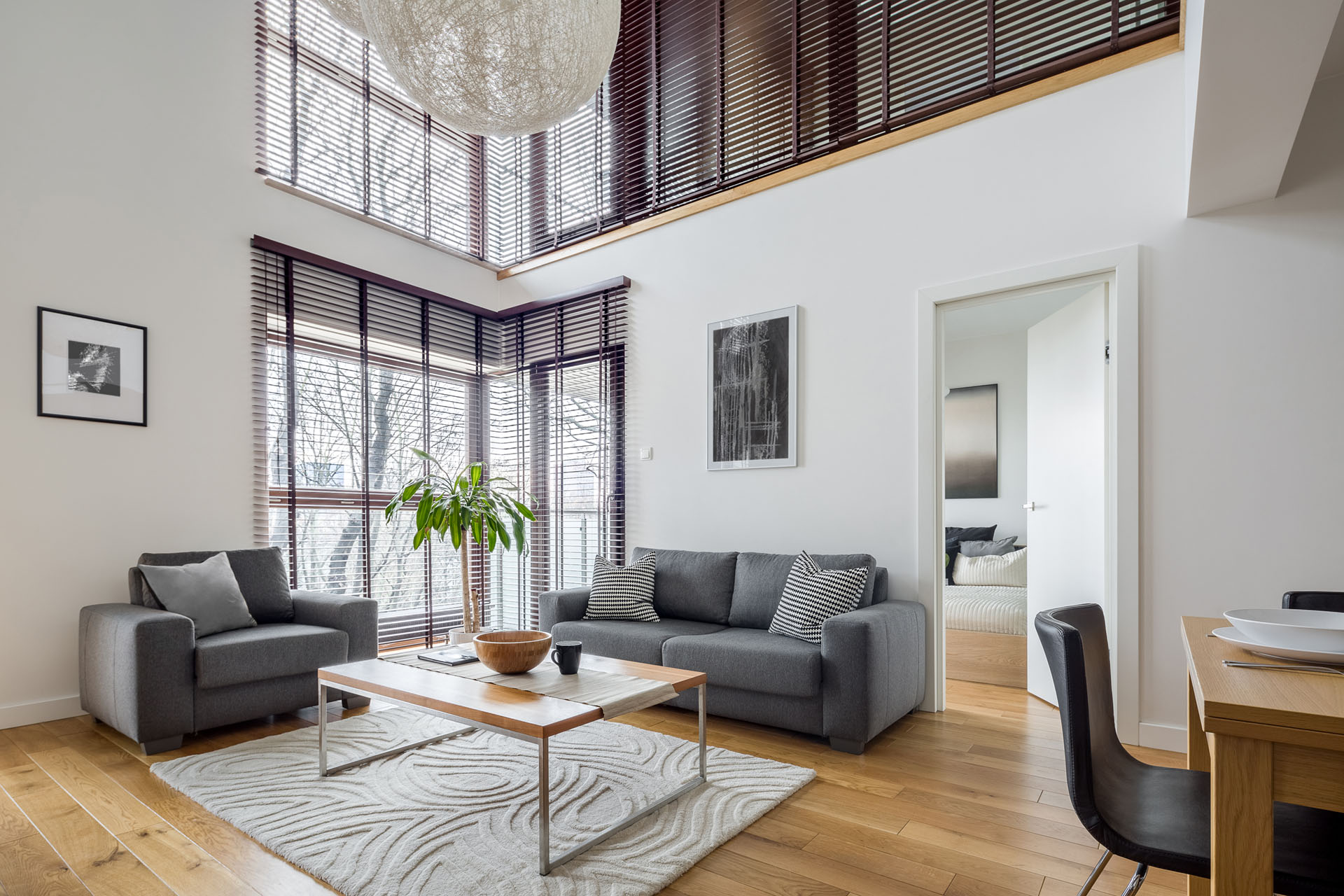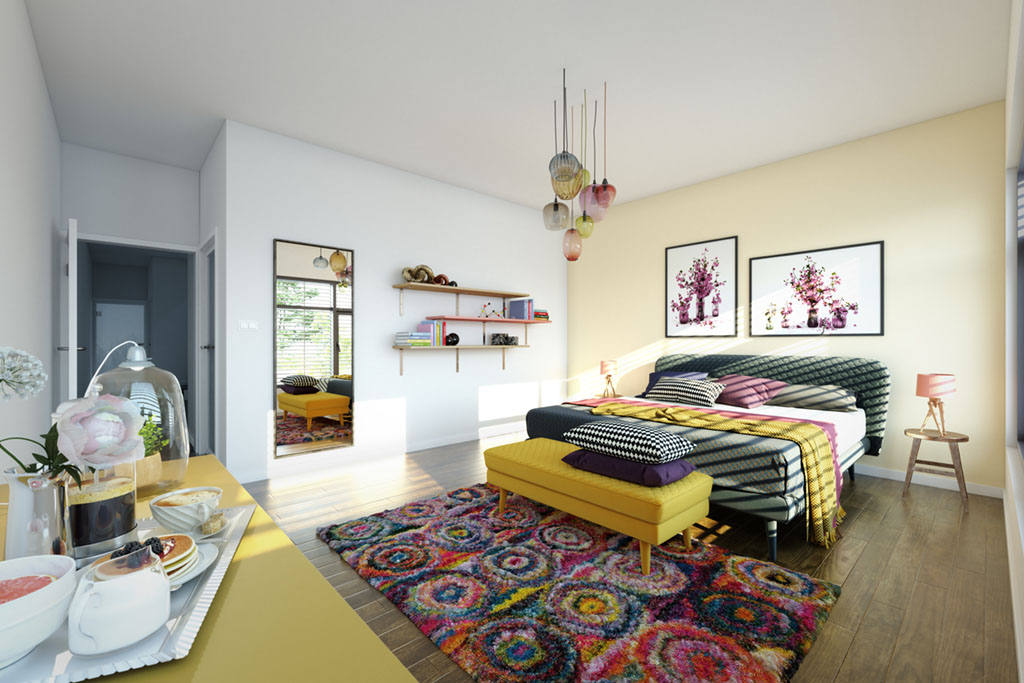
Minimalism vs. Maximalism: Which Style Is Right for You?
Ludwig Mies van der Rohe, one of the most renowned modernist architects, popularized the “less is more” philosophy, specifically in regard to architecture and design. Over the past few years, this age-old adage has morphed into a design style known as minimalism. This look draws major influence from Japan and is typically defined as being clean, uncluttered, neutral or monochromatic, and simple, with an emphasis on form, light, and function.
On the other side of the spectrum is maximalism, a “more is more” response to minimalism. Various colors, mixing of fabrics and patterns, decorations, and ornate accessories all contribute to a maximalist design approach.
But is one style better than the other? And how can you incorporate one of these styles—or a blend of both—into your home? Taking a closer look at what each option entails will help you decide which style suits your personal taste.
Minimalism

-
This design aesthetic isn’t as austere as you may think, and it isn’t only comprised of whites, creams, and harsh lines. Minimalism takes a more functional approach to infusing personal touches into the home. You can still have artwork, a centerpiece on the dining room table, and a patterned throw blanket you like. It’s about looking at your space through a more subdued design lens and only keeping items that reflect your personality and serve a purpose.
Kari McIntosh, founder of San Mateo-based interior design firm Kari McIntosh Design, lends her expertise on this style: “Sift through and ruthlessly purge your personal belongings, and create storage systems for anything you are keeping out of sight. Choose a light, unifying paint color for the home, and focus on clean-lined furnishings with a few large-scale accessories and artwork. The larger the scale, the fewer individual objects are needed. Add something like a meaningful mural in sepia tones as an accent.” It’s also important to keep in mind that a minimalist look doesn’t have to require a complete modern renovation. If the bones of your space are more traditional and historical, you can still achieve a minimalist aesthetic.
To embrace minimalism, you should ask yourself, “How does each piece in this room inform the next?” For example, how does the pop of blue in this throw blanket on the couch flow into the couch itself or the coffee table next to it? Minimalism is about thoughtfulness and intention at its core. Less may be more in terms of decorative items, but when it comes to thinking through the ‘how,’ it’s crucial to make purposeful choices.Practical Tips for a Minimalist Style:
Limit a pop of color to one or two in a room, sticking to a neutral palette overall.
Declutter, declutter, declutter. Remove anything that doesn’t bring a sense of serenity to your space.
Instead of a gallery wall, choose one or two pieces of artwork as focal points.
For cabinetry, drawers, and countertops, avoid jutting handles and unnatural textures. Try stainless steel, quartz, or marble, with elements that don’t poke out.
Replace heavy curtains with a sheer material to let more light in.
Maximalism

-
Some people love variety, bursts of vibrant colors, and pieces of art in every nook and cranny of their home. Maximalism embodies all of those qualities and more.
This extravagant style can be traced back to the 1970s art scene. During this time, artists embraced colors and patterns and took a bolder approach to their medium, which expressed the zeitgeist of that time and set them apart from the minimalistic style of the previous decades.
Unsurprisingly, maximalism floated its way into the interior design realm shortly thereafter. McIntosh, who is partial to this approach to interior decorating, says, “To achieve a maximalist style at home, choose edgy wallpapers that play with scale, color, and shine, and embrace deep, rich colors. Don’t forget the fifth wall (the ceiling) to treat with gilding, wallpaper, or a fun cabana paint stripe.”
The key word? Fun. Maximalism should evoke a sense of playfulness. Have you been hiding souvenirs in your attic? Dust them off and put them on full display. Can’t decide between yellow paint or a patterned wallpaper for the walls? Maximalism says, “To heck with it. Use both.” McIntosh continues, saying, “Anything in multiples makes a charming statement if it’s gathered on bookshelves or custom framed. Some examples include pottery collections, vintage pennants, or even framed menus from Michelin-starred restaurants. I have done each of these for clients. Add fabric and trims whenever possible through pillows or a draped vintage textile.”Practical Tips for a Maximalist Style:
Floral, abstract, striped, animal, or geometric-printed wallpapers are fair game.
Layer various textures, colors, patterns, and fabrics.
Accessorize with statement pieces, such as stacks of books, antiques, throw pillows of varying patterns, and other eclectic items.
Add an assortment of plants. A boho design style is often associated with maximalism for this very reason.
Maximalism favors the bold, so don’t be afraid to pull out all your flea market finds or finally buy that leopard print wallpaper you’ve had your eye on. Infusing the space with your personal style will make your artistic expression shine brightly.
Merging the Styles

-
By themselves, minimalism and maximalism offer strikingly distinct interior design looks. However, keep in mind that they don’t have to be mutually exclusive. Here are just a few ways to incorporate both into your space.
Use colorful and bold wallpaper in a bedroom while keeping your living room airy and monochromatic.
Layer textures and objects in the same room while sticking to a neutral color palette.
Share this article so friends and family can find their perfect design aesthetic.
Up Next:
America's Drive-Ins Are Making a Comeback

Posted in August 2021 on May 03, 2021